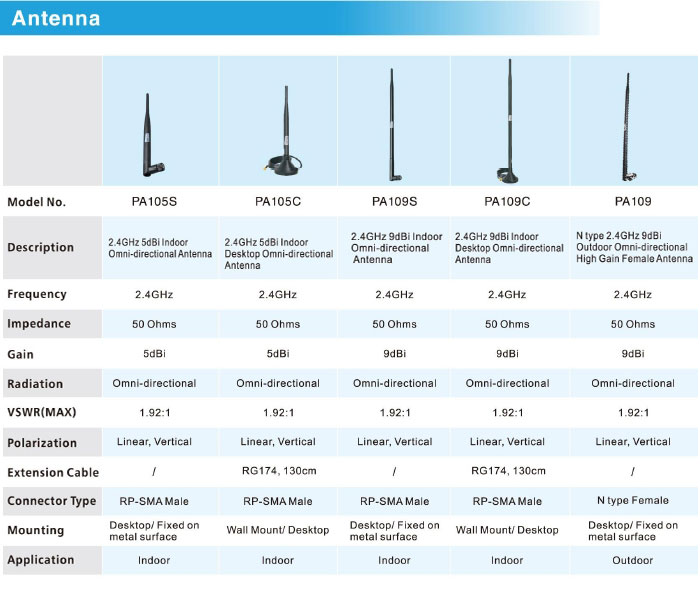


Wi-Fi networking works by sending radio transmissions on specific frequencies where listening devices can receive them. The necessary radio transmitters and receivers are built into Wi-Fi enabled equipment like routers, laptops and phones. Antennas are also key components of these radio communication systems, picking up incoming signals or radiating outgoing Wi-Fi signals.
Antenna Power Gain
The connection range of a Wi-Fi device depends greatly on its antenna's power gain. A numeric quantity measured in relative decibels (dB), gain represents the maximum effectiveness of an antenna compared to a standard reference antenna.
The general gain of the antenna on netis router is 5dBi and there’re also other values of 9dBi, 10dBi, 12dBi.Higher values of gain indicate an antenna capable of working at higher levels of power, which usually results in greater range.
Omni-directional Wi-Fi Antennas
Some Wi-Fi antennas are designed to work with signals in any direction. These Omni-directionalantennas are commonly used on netis indoor routers and adapters as such devices must support connections from multiple directions.
Directional Wi-Fi Antennas
Directional antennas are typically used to extend the range of a Wi-Fi network into hard-to-reach corners of buildings or other specific situations where 360-degree coverage is not needed.
netis High Power outdoor routers have built-in antennas to support 2.4GHz (or 5GHz) signaling with gain up to 12dBi (or 10dBi), suitable for indoor or outdoor use.
Upgrading Wi-Fi Antennas
Wireless networking problems caused by weak signal strength can sometimes be solved by installing upgraded Wi-Fi antennas on the affected equipment. On business networks, professionals typically perform a comprehensive site survey to map the Wi-Fi signal strength in and around office buildings and strategically install additional wireless access points where needed. Antenna upgrades can be simpler and a more cost effective option to fix Wi-Fi signal problems, particularly on home networks.
Consider the following when planning the antenna upgrade strategy for a home network:
- Consider about the basic specifications of the Wi-Fi antennas to match with your Wi-Fi router: Frequency (2.4GHz/5GHz), Impedance(50Ohms), Connector(RP-SMA/ SMA/N-Type, Male/Female).
- Evaluate both gain and directional radius support properties of antennas when choosing one.
- Some Wi-Fi router or adapter does not support aftermarket antenna upgrades; consult the manufacturer's documentation to confirm.
At least, the original antenna on the device should be detachable.
- Upgrading a router's omnidirectional antennas can improve connectivity with all devices in the home and sufficiently resolve basic signal issues. Upgrading client devices only benefits each one individually.
- For convenient deployment, sometimes the antenna accessories are good choices.
Here listed the available netis antennas and accessories for your consideration.





